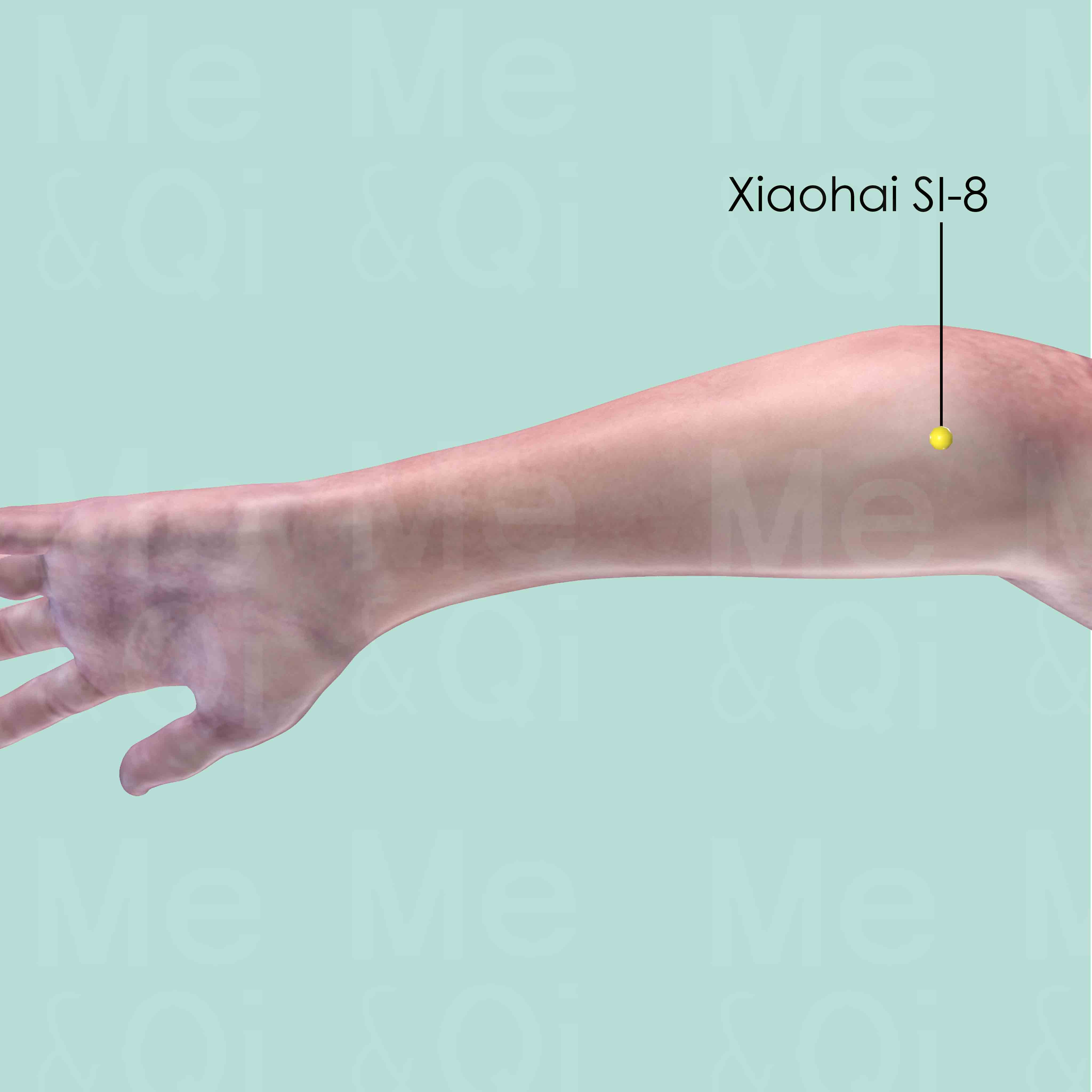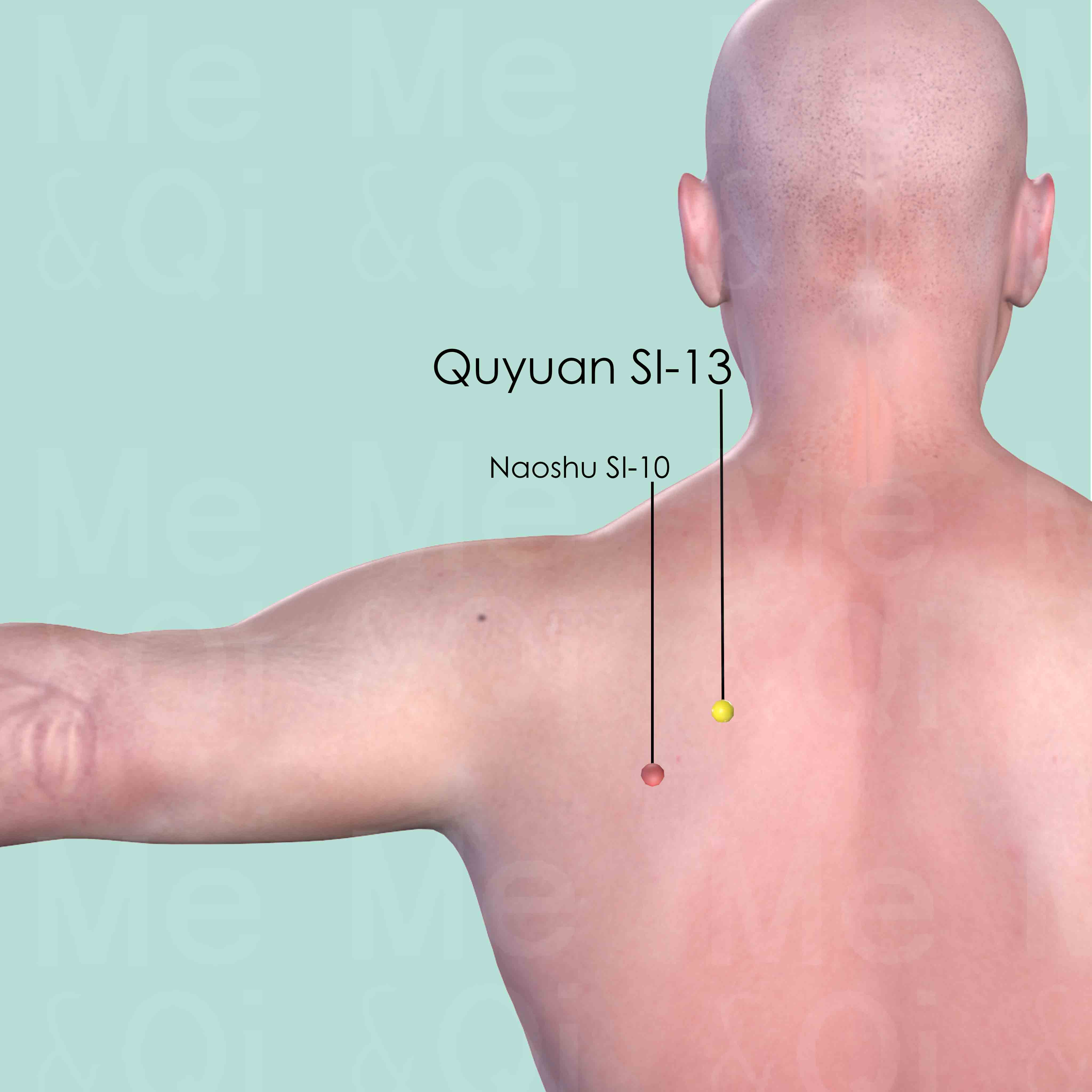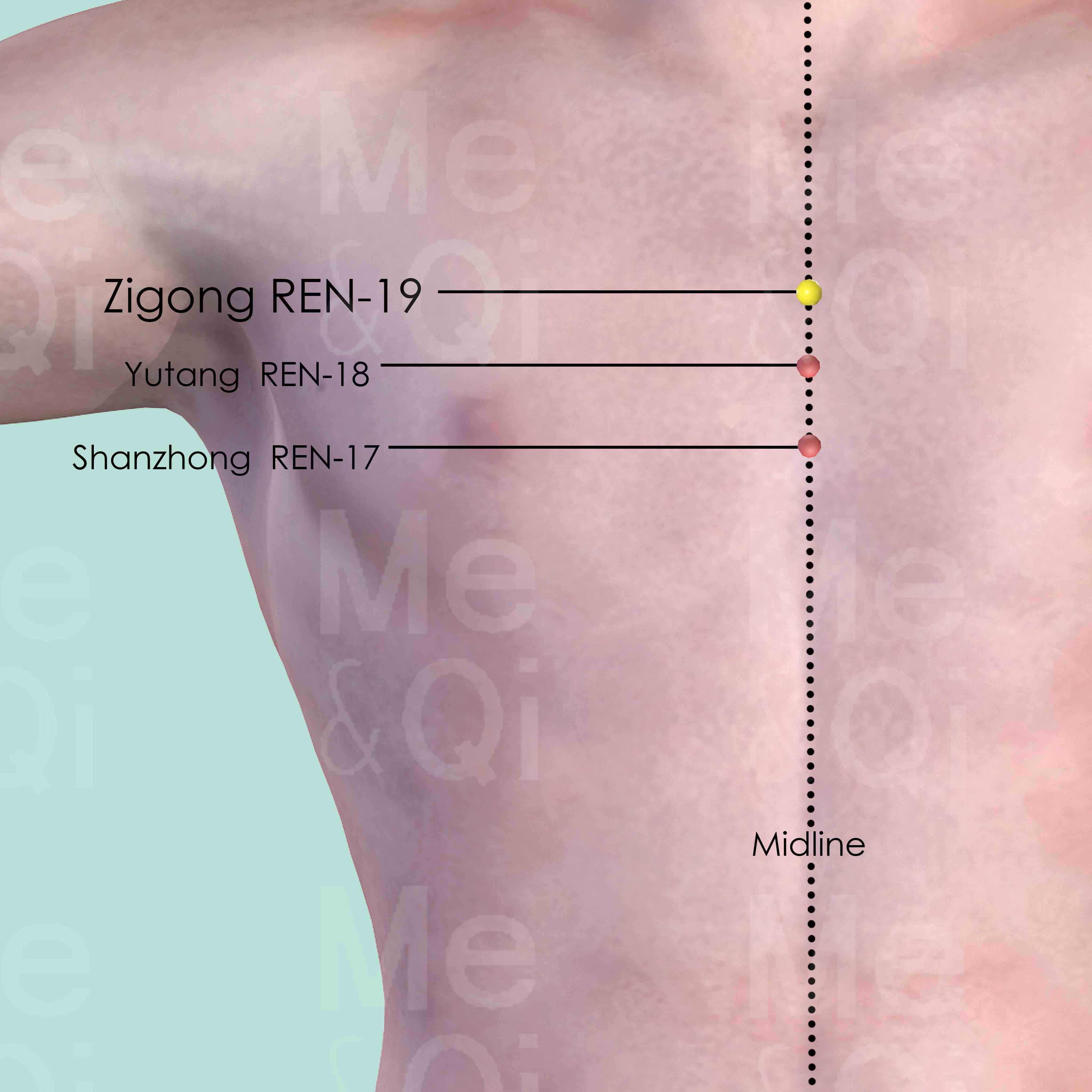Bone And Joint Painaccording to TCM
Symptom families: Bone Pain and Discomfort, Joint Pain and Discomfort
Sub-symptom(s): Bone Pain Hip Bone Pain Clavicle Pain Scapula Pain
What is Bone and Joint Pain?
Bone and joint pain affect countless individuals, characterized by discomfort, aching, and sometimes debilitating soreness in various parts of the musculoskeletal system. This pain can be acute, stemming from injury or infection, or chronic, often associated with age-related conditions like osteoarthritis or systemic diseases such as rheumatoid arthritis. These symptoms can severely impact the quality of life, limiting mobility and daily activities.
How Does TCM View Bone and Joint Pain?
Traditional Chinese Medicine (TCM) approaches bone and joint pain as manifestations of deeper imbalances within the body's energetic pathways. It sees the bones as governed by the Kidney Channel and the joints as hubs where Qi and Blood gather and flow.
TCM posits that pain arises when these flows are disrupted by disharmony between the fundamental elements of Yin and Yang, the presence of pathogenic factors like Dampness or Cold, or a deficiency in life-essential substances like Qi, Blood, Yin, or Yang.
Root Causes of Bone And Joint Pain in TCM
TCM identifies various patterns that could lead to bone and joint pain. One such pattern involves Yang Deficiency, where there's not enough 'warming' energy, leading to Cold-Damp accumulation in the bones and joints, resulting in pain, heaviness, and stiffness, particularly in cold conditions.
Treatment in TCM focuses on correcting the underlying disharmony through a combination of acupuncture, herbal medicine, dietary advice, and Qi Gong exercises.
Explore below more details about what might cause Bone and joint pain according to TCM.
Yang Deficiency
Yang deficiency in TCM refers to a state where the body's Yang energy, which is responsible for warmth, activity, and function, is weakened or diminished. This pattern of disharmony often arises from chronic illness, aging, or inherent constitutional weakness. Symptoms of Yang deficiency are typically associated with cold and sluggishness, such as a feeling of coldness, cold extremities, pale complexion, low energy or fatigue, and a desire for warmth. Digestive issues like poor appetite, loose stools, and water retention can also be indicative of Yang deficiency.... see more
Yang Deficiency Patterns That Can Lead to Bone And Joint Pain
| Pattern Name | Relevant Symptoms | Relevant Formulas |
|---|---|---|
| Yang Deficiency with Cold-Damp | Aching bones and joints, Body pain, Bone and joint pain, Cold extremities, Absence of thirst, Aversion to cold, Migraine, Cluster headache, Trigeminal neuralgia, Piriformis syndrome, Rheumatoid arthritis... see more | Fu Zi Tang |
Yin Deficiency
Yin deficiency in TCM is a pattern of disharmony characterized by a depletion of the body's Yin energy, which represents the cooling, moistening, and nurturing aspects of our physiology. This condition often arises from factors like chronic stress, overwork, insufficient rest, or prolonged illness. Symptoms of Yin deficiency can include a sensation of heat, especially in the afternoon or evening, night sweats, insomnia, a dry mouth or throat, and a red tongue with little coating. There might also be a general feeling of restlessness or irritability. Since Yin is essential for balancing the body's active and warm Yang energy, its deficiency leads to a relative excess of Yang, manifesting as heat or dryness symptoms.... see more
Yin Deficiency Patterns That Can Lead to Bone And Joint Pain
| Pattern Name | Relevant Symptoms | Relevant Formulas |
|---|---|---|
| Kidney Yin Deficiency | Bone ache, Perspiration, Back pain, Hearing loss, Dry mouth and throat at night, Lower back pain, Constipation, Scanty and dark urine, Infertility, Premature ejaculation, Generalized fatigue, General weakness, Depression, Anxiety, Heat sensation in palms, Evening heat sensation, Flushed cheekbones, Menopausal hot flashes, Preference for sipping, Evening anxiety... see more | Liu Wei Di Huang Wan | Zuo Gui Wan | Zhi Bo Di Huang Wan | Bai Zi Yang Xin Tang 2 | Qi Bao Mei Ran Dan |
Cold
In TCM "Cold" as a pattern of disharmony refers to a specific type of imbalance within the body's systems, often linked to a deficiency or weakness. It's not about feeling physically cold or having a common cold, but rather a metaphorical description of certain symptoms and underlying conditions. When a TCM practitioner says someone suffers from "Cold," it usually implies that the body's Yang energy, which is warm and active, is insufficient or overpowered by Yin energy, which is cool and passive. Symptoms of Cold in TCM can include a general feeling of coldness, cold limbs, pale complexion, low energy, slow metabolism, and a preference for warmth. ... see more
Cold Patterns That Can Lead to Bone And Joint Pain
| Pattern Name | Relevant Symptoms | Relevant Formulas |
|---|---|---|
| Yang Deficiency with Cold-Damp | Aching bones and joints, Body pain, Bone and joint pain, Cold extremities, Absence of thirst, Aversion to cold, Migraine, Cluster headache, Trigeminal neuralgia, Piriformis syndrome, Rheumatoid arthritis... see more | Fu Zi Tang |
Dampness
"Dampness" in TCM is a concept that describes a pattern of disharmony where the body accumulates excess moisture. Imagine the heavy, sticky feeling you get on a very humid day; that's similar to what dampness feels like internally. It can manifest as a sense of heaviness, bloating, sluggishness, or even a foggy mind. This condition is often thought to arise from environmental factors like living in a damp place, dietary habits that promote moisture in the body, or internal imbalances that hinder the body's ability to process fluids properly. In TCM, dampness can obstruct the normal flow of energy and fluids in the body, leading to various symptoms.... see more
Dampness Patterns That Can Lead to Bone And Joint Pain
| Pattern Name | Relevant Symptoms | Relevant Formulas |
|---|---|---|
| Yang Deficiency with Cold-Damp | Aching bones and joints, Body pain, Bone and joint pain, Cold extremities, Absence of thirst, Aversion to cold, Migraine, Cluster headache, Trigeminal neuralgia, Piriformis syndrome, Rheumatoid arthritis... see more | Fu Zi Tang |
Kidney
In TCM the Kidneys are regarded as the body's most fundamental reservoir of Essence, known as Jing, which influences growth, reproduction, and aging. They are not just organs for filtering blood, but a holistic system governing vital life forces. When the Kidneys malfunction in TCM, it can manifest as a variety of health issues, such as chronic fatigue, reproductive problems, imbalances in fluid metabolism leading to edema or dryness, lower back pain, and a sense of fear or insecurity.... see more
Kidney Patterns That Can Lead to Bone And Joint Pain
| Pattern Name | Relevant Symptoms | Relevant Formulas |
|---|---|---|
| Kidney Yin Deficiency | Bone ache, Perspiration, Back pain, Hearing loss, Dry mouth and throat at night, Lower back pain, Constipation, Scanty and dark urine, Infertility, Premature ejaculation, Generalized fatigue, General weakness, Depression, Anxiety, Heat sensation in palms, Evening heat sensation, Flushed cheekbones, Menopausal hot flashes, Preference for sipping, Evening anxiety... see more | Liu Wei Di Huang Wan | Zuo Gui Wan | Zhi Bo Di Huang Wan | Bai Zi Yang Xin Tang 2 | Qi Bao Mei Ran Dan |
TCM Herbal Formulas for Bone And Joint Pain
In addressing bone and joint pain, TCM practitioners may prescribe formulas like Fu Zi Tang, a warming concoction featuring Prepared aconite, to combat Cold-Damp that stagnates in the body, leading to pain. Herbs that expel Cold and Dampness, improve blood circulation, and strengthen the bones and sinews are commonly used. Each herbal prescription is tailored to the individual's presenting pattern, ensuring a targeted approach to restore balance and alleviate pain.
Explore below some TCM herbal formulas used to address bone and joint pain, organized by cause and by formula type.
- By Cause
- By Formula Type
- Yang Deficiency
- Yin Deficiency
- Cold
- Dampness
- View More Causes
- Formulas that nourish yin and tonify
- Formulas that warm and transform water and dampness
- Formulas that nourish the heart and calm the mind
- Formulas that tonify yin and yang
Top Formula for Yang Deficiency:
Fu Zi Tang
Suitable for Yang Deficiency patterns that may cause bone and joint pain, such as Yang Deficiency with Cold-Damp
Learn moreTop Formula for Yin Deficiency:
Liu Wei Di Huang Wan
Suitable for Yin Deficiency patterns that may cause bone and joint pain, such as Kidney Yin Deficiency
Learn moreAll Formulas Recommended for Bone And Joint Pain Caused by Yin Deficiency
| Formula | Patterns Suitable For |
|---|---|
| Liu Wei Di Huang Wan | Kidney Yin Deficiency |
| Zuo Gui Wan | Kidney Yin Deficiency |
| Zhi Bo Di Huang Wan | Kidney Yin Deficiency |
| Bai Zi Yang Xin Tang 2 | Kidney Yin Deficiency |
| Qi Bao Mei Ran Dan | Kidney Yin Deficiency |
Top Formula for Cold:
Fu Zi Tang
Suitable for Cold patterns that may cause bone and joint pain, such as Yang Deficiency with Cold-Damp
Learn moreTop Formula for Dampness:
Fu Zi Tang
Suitable for Dampness patterns that may cause bone and joint pain, such as Yang Deficiency with Cold-Damp
Learn moreFormulas that nourish Yin and tonify
These formulas are suitable for some bone and joint pain-causing patterns like Kidney Yin Deficiency.
One such formula is Liu Wei Di Huang Wan, with prepared rehmannia as a key herb.
Other formulas of this category are listed in the table below.
All "formulas that nourish yin and tonify" recommended for bone and joint pain
| Formula | Patterns Suitable For (if applicable) |
|---|---|
| Liu Wei Di Huang Wan | Kidney Yin Deficiency |
| Zuo Gui Wan | Kidney Yin Deficiency |
| Zhi Bo Di Huang Wan | Kidney Yin Deficiency |
Formulas that warm and transform water and Dampness
These formulas are suitable for some bone and joint pain-causing patterns like Yang Deficiency with Cold-Damp.
One such formula is Fu Zi Tang, with prepared aconite as a key herb.
Formulas that nourish the Heart and calm the Mind
These formulas are suitable for some bone and joint pain-causing patterns like Kidney Yin Deficiency.
One such formula is Bai Zi Yang Xin Tang 2, with biota seeds as a key herb.
Formulas that tonify Yin and Yang
These formulas are suitable for some bone and joint pain-causing patterns like Kidney Yin Deficiency.
One such formula is Qi Bao Mei Ran Dan, with fleeceflower root as a key herb.
Acupoints for Bone And Joint Pain
Explore below some acupoints used to address bone and joint pain, organized by meridian.
- By Meridian
- Small Intestine Channel
- Bladder Channel
- Gall Bladder Channel
- Directing Vessel
- Triple Burner Channel
- Pericardium Channel
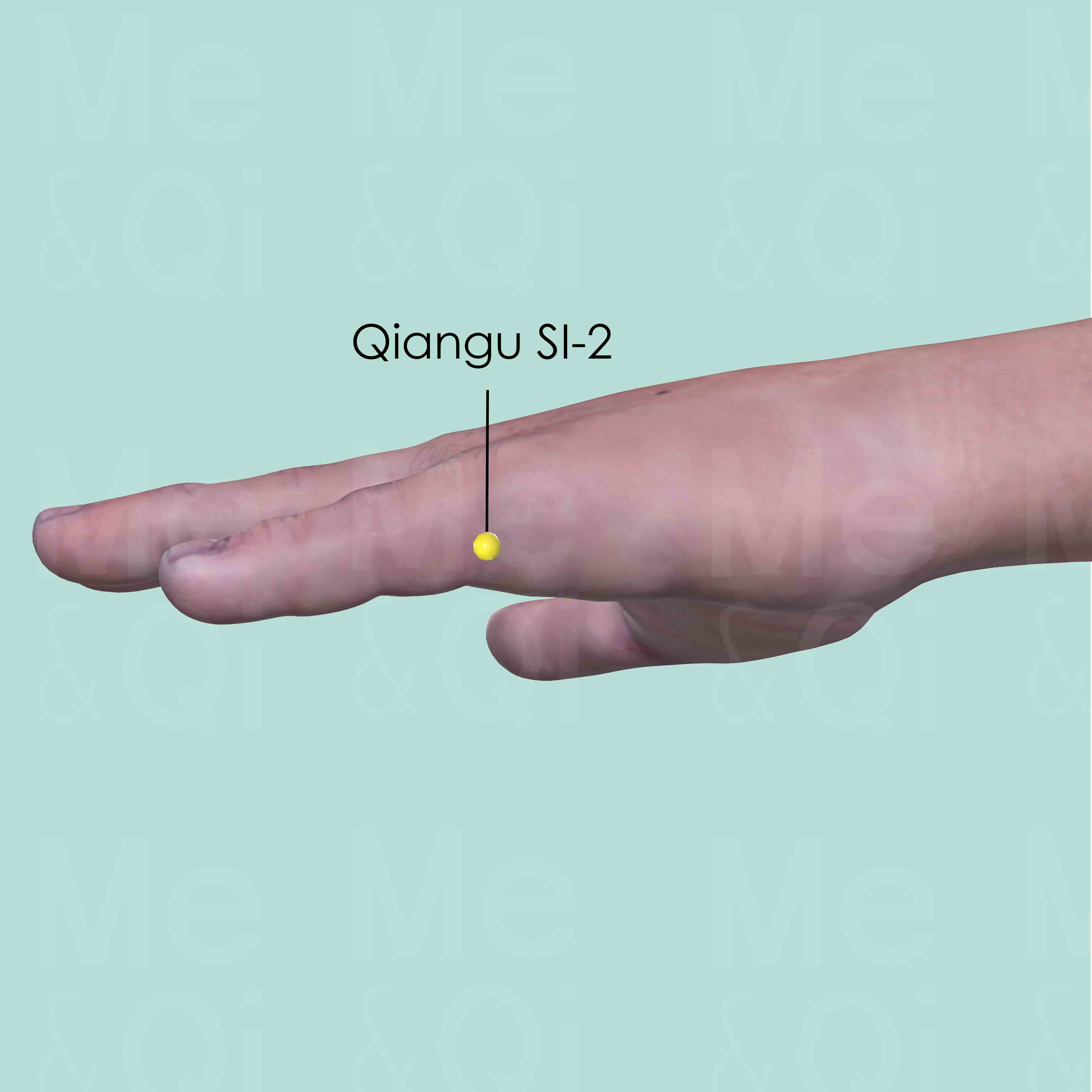
Qiangu SI-2
On the ulnar aspect of the little finger, distal to the metacarpophalangeal joint, at the junction of the shaft and the base of the proximal phalanx.
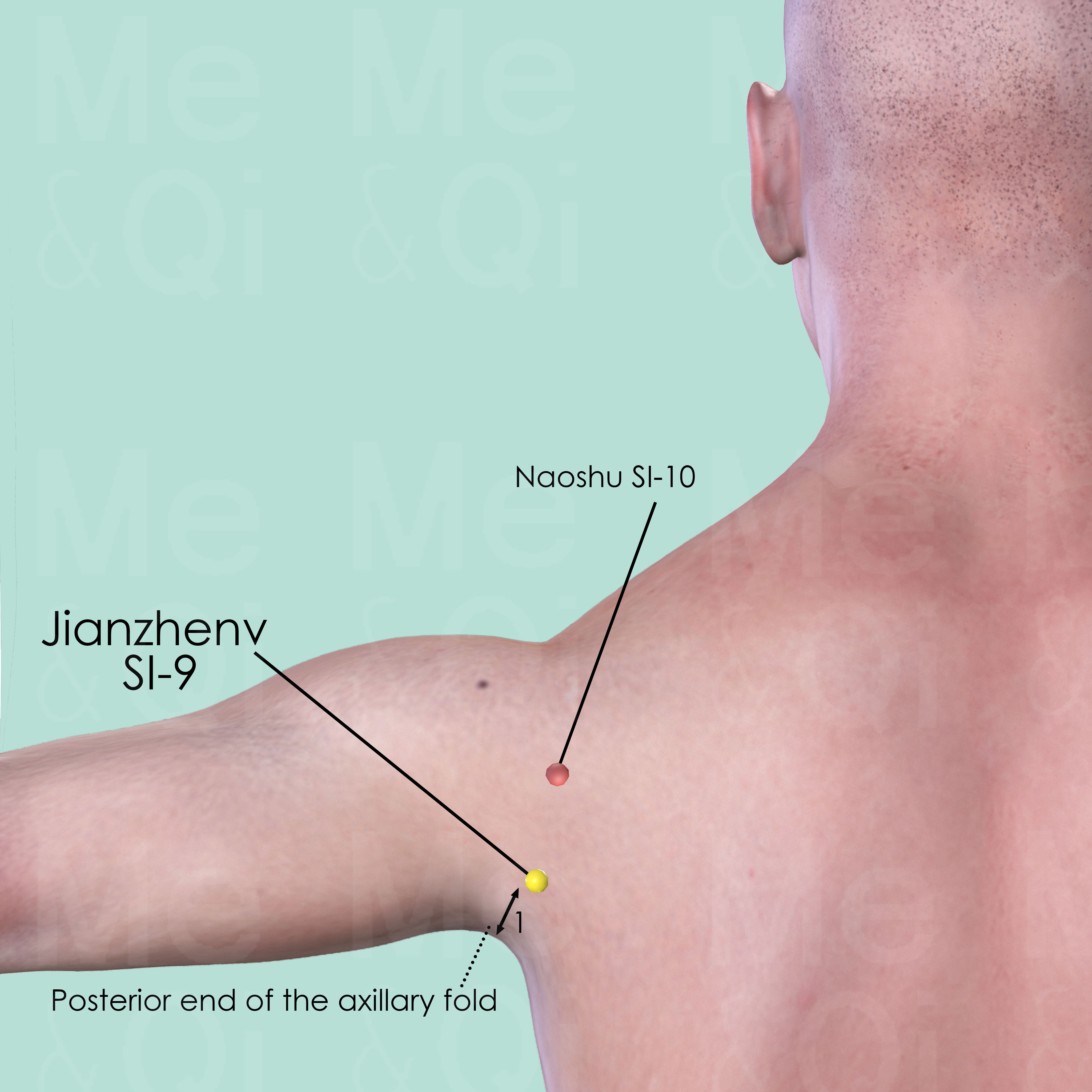
Jianzhen SI-9
Posterior and inferior to the shoulder joint. When the arm is adducted, Jianzhen SI-9 is 1 cun above the posterior end of the axillary fold. Naoshu SI-10 is located directly above Jianzhen SI-9.
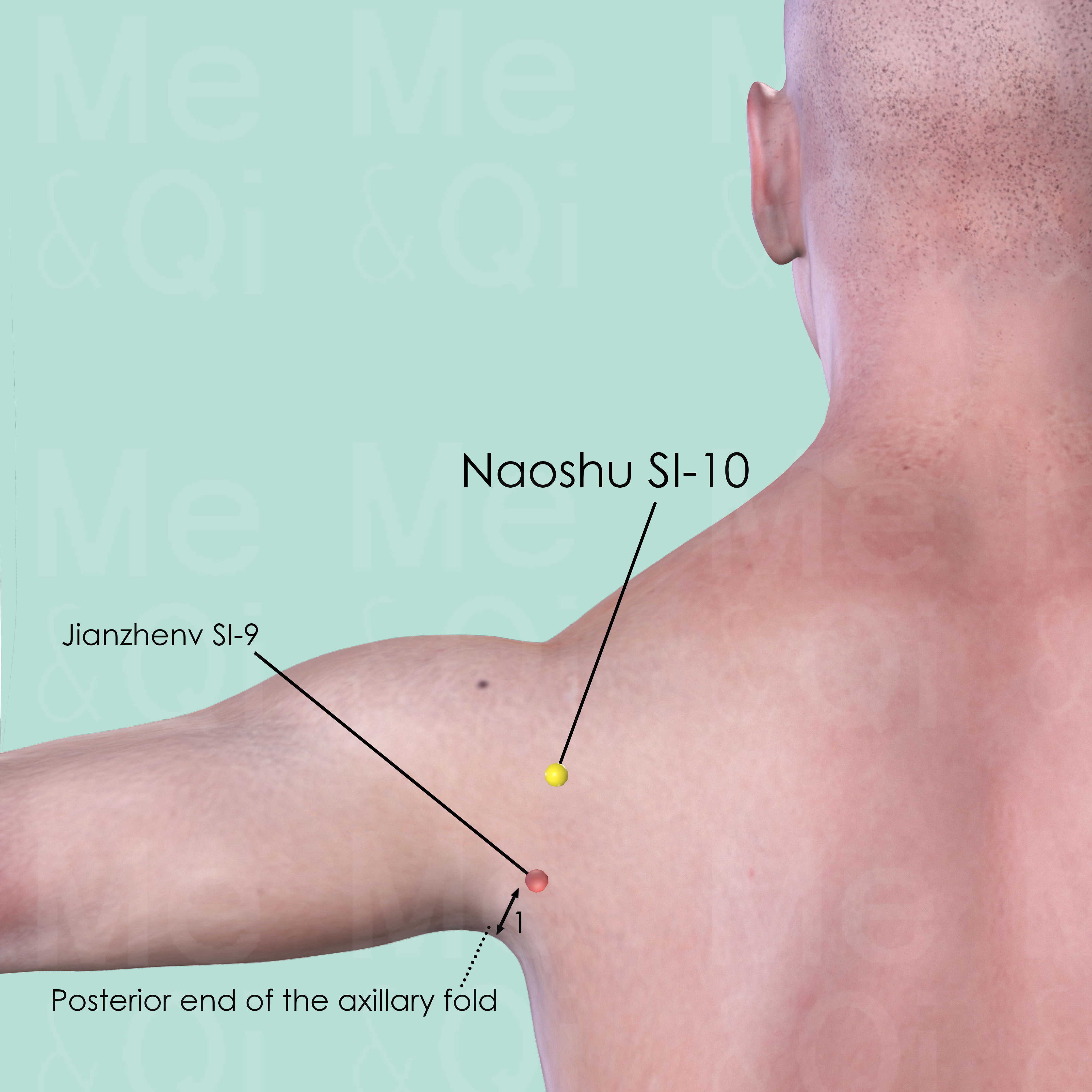
Naoshu SI-10
When the arm is adducted, Naoshu SI-10 is directly above JianZhen SI-9, in the depression inferior and lateral to the scapular spine.
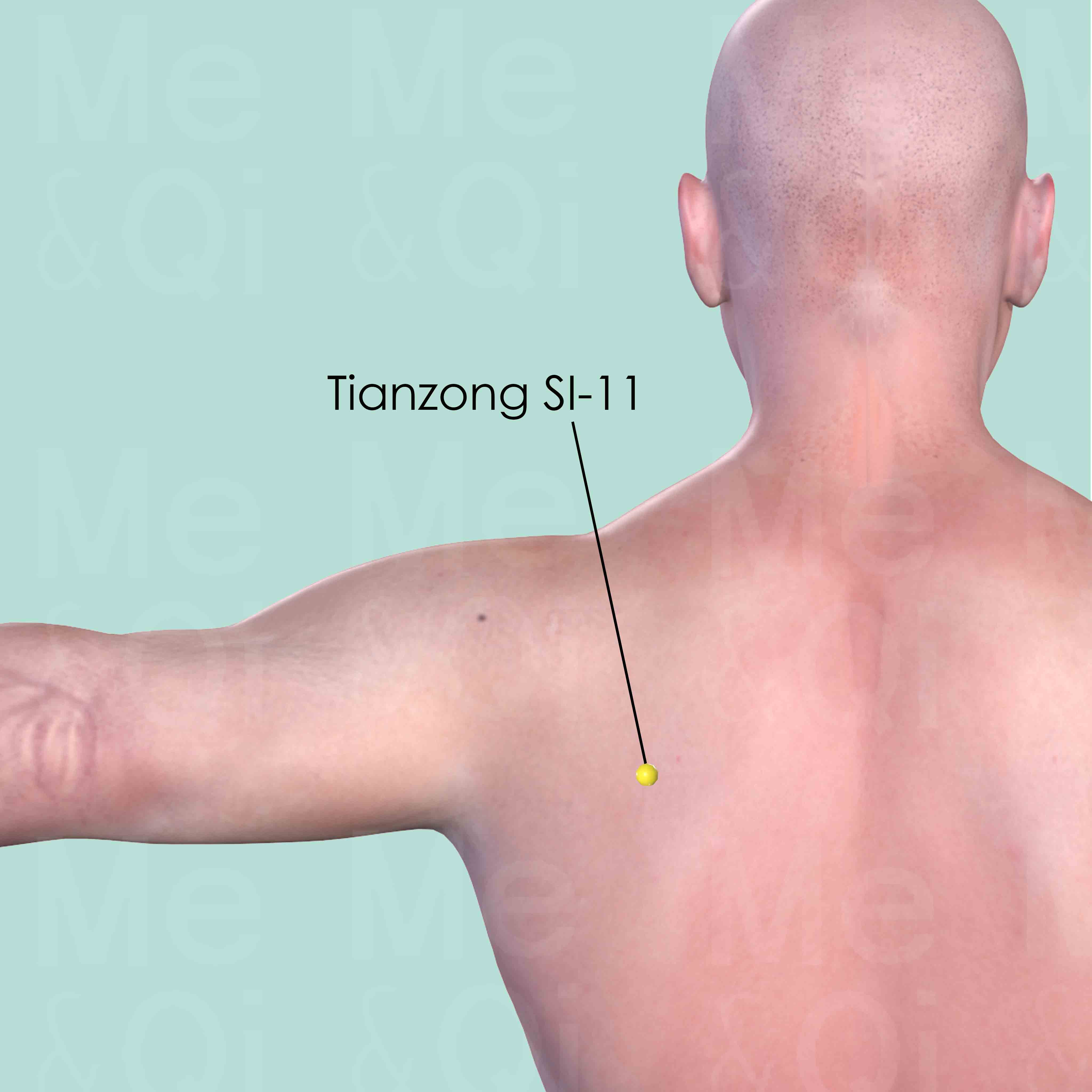
Tianzong SI-11
In the intrascapular fossa, at the junction of the upper and middle third of the distance between the lower border of the scapular spine and the inferior angle of the scapula.
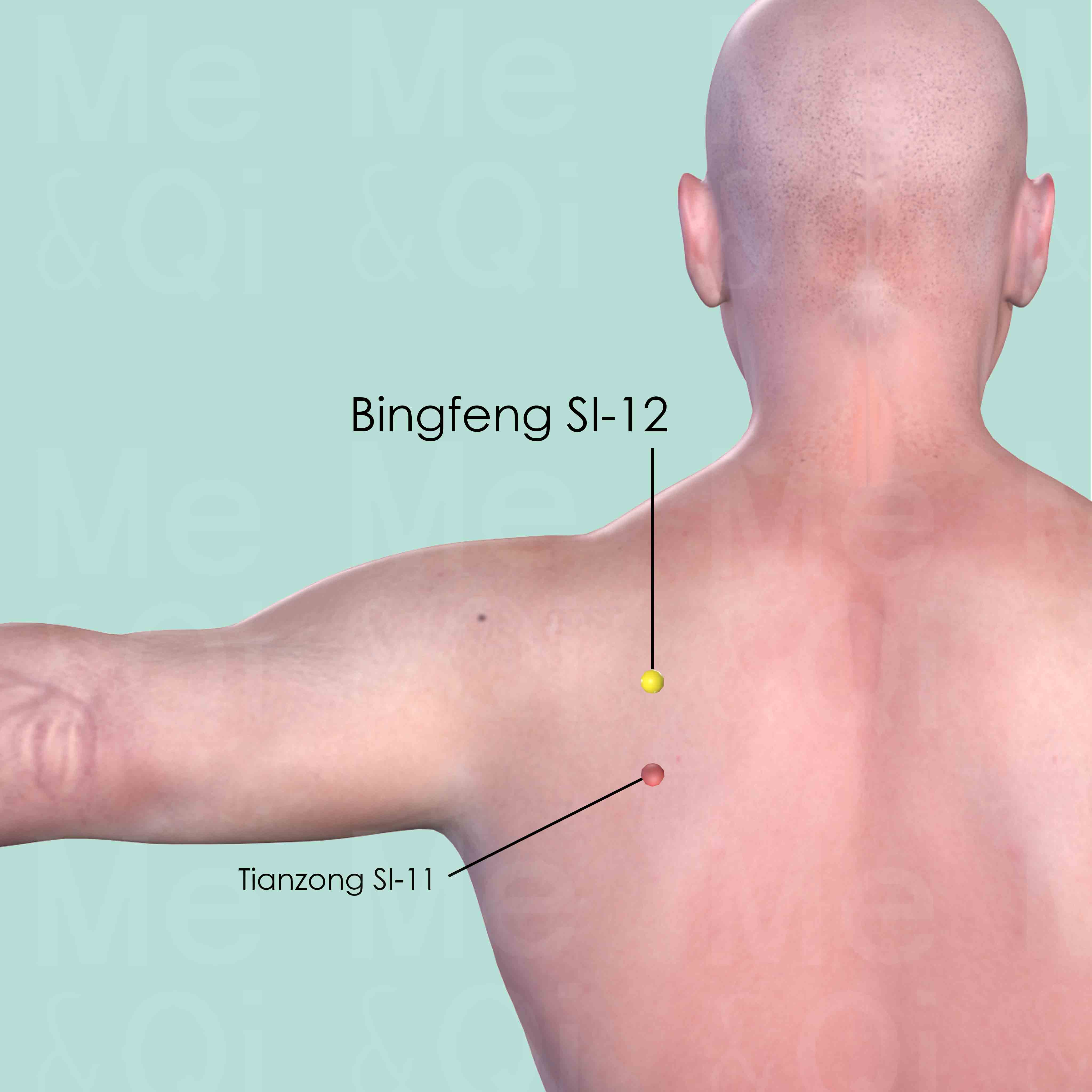
Bingfeng SI-12
In the center of the suprascapular fossa, directly above Tianzong SI-11. When the arm is lifted, the point is at the site of the depression.
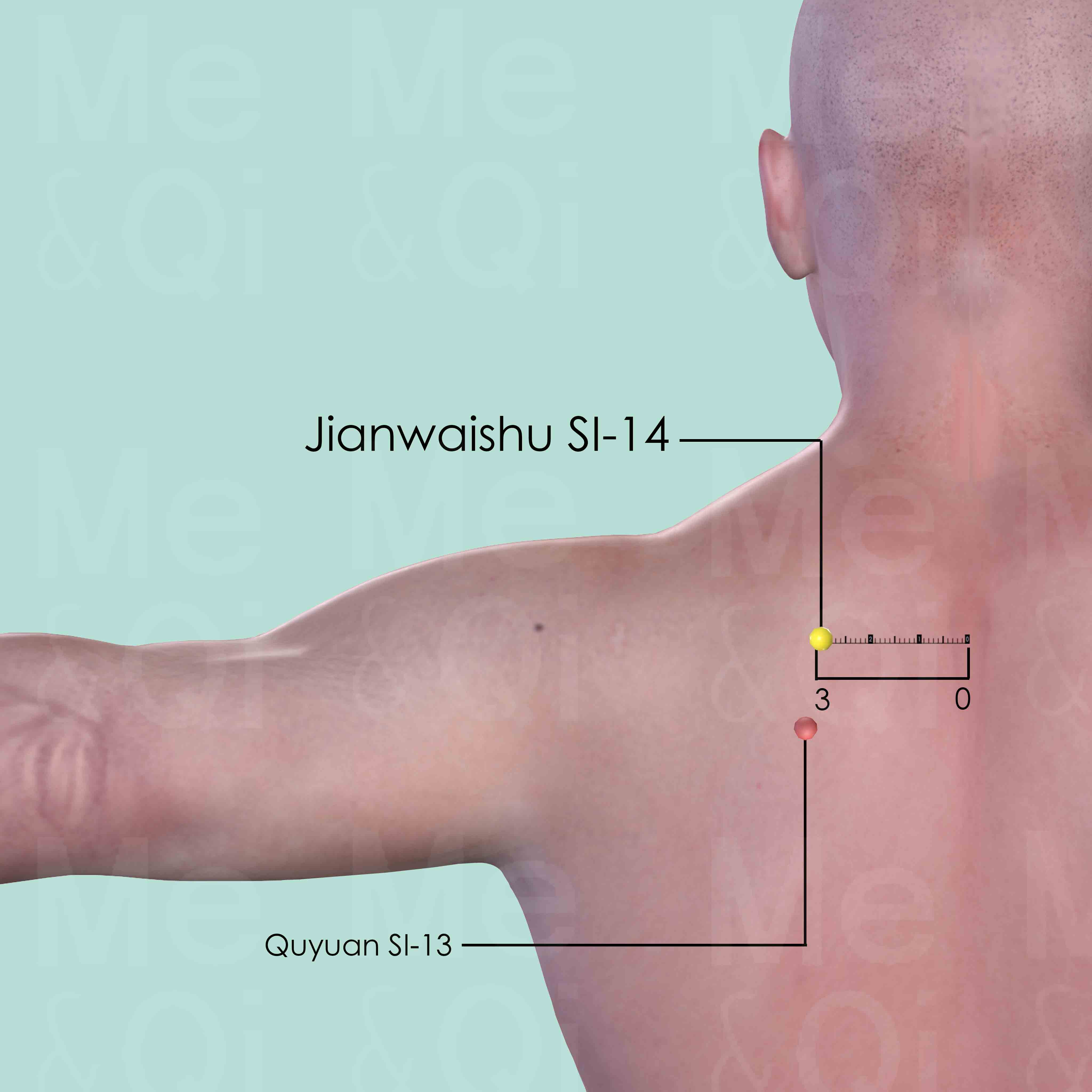
Jianwaishu SI-14
3 cun lateral to the lower border of the spinous process of the 1st thoracic verrtebra (T1), on the vertical line drawn from the levator scapulae muscle.
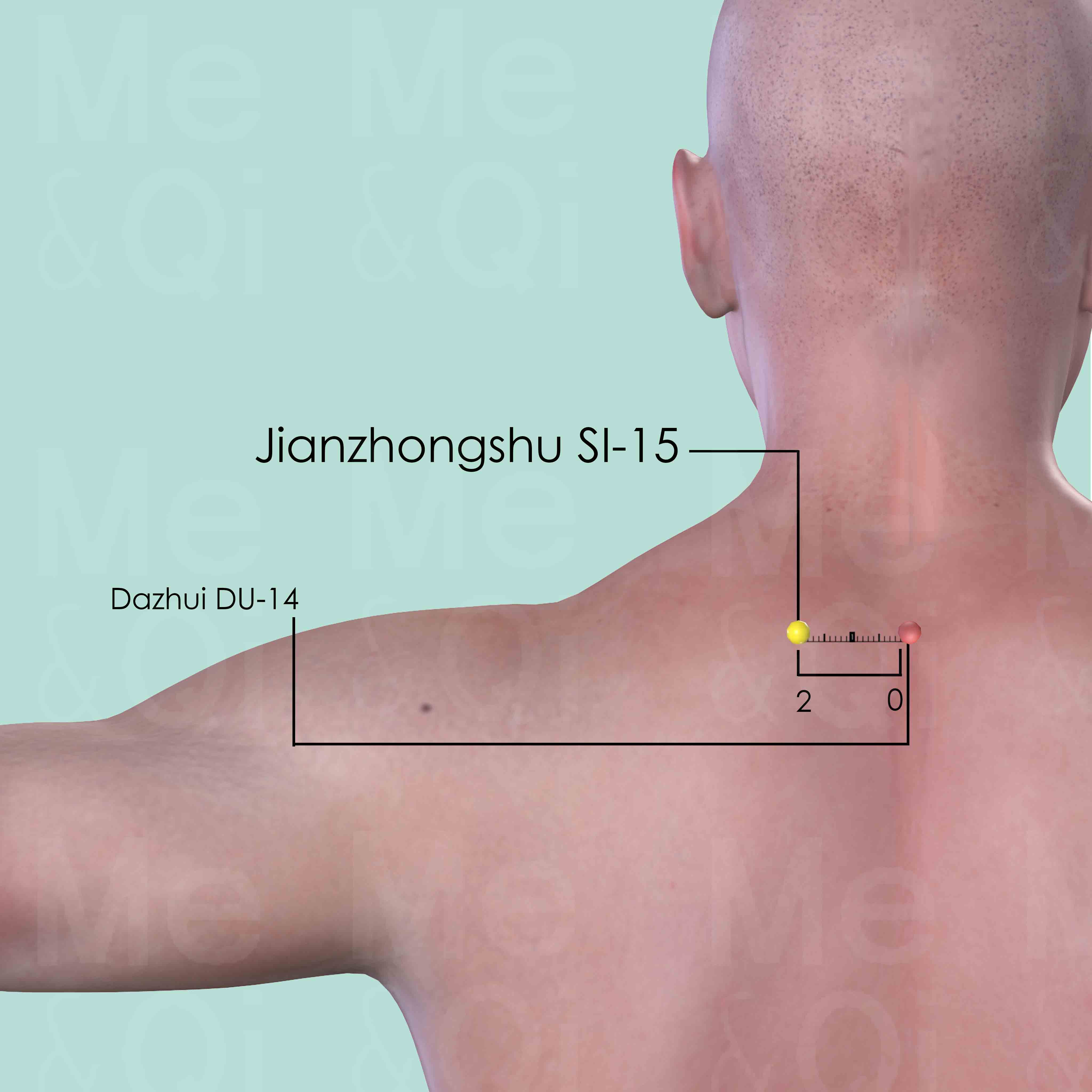
Jianzhongshu SI-15
2 cun lateral to the lower border of the spinous process of the 7th cervical vertebra (C7).
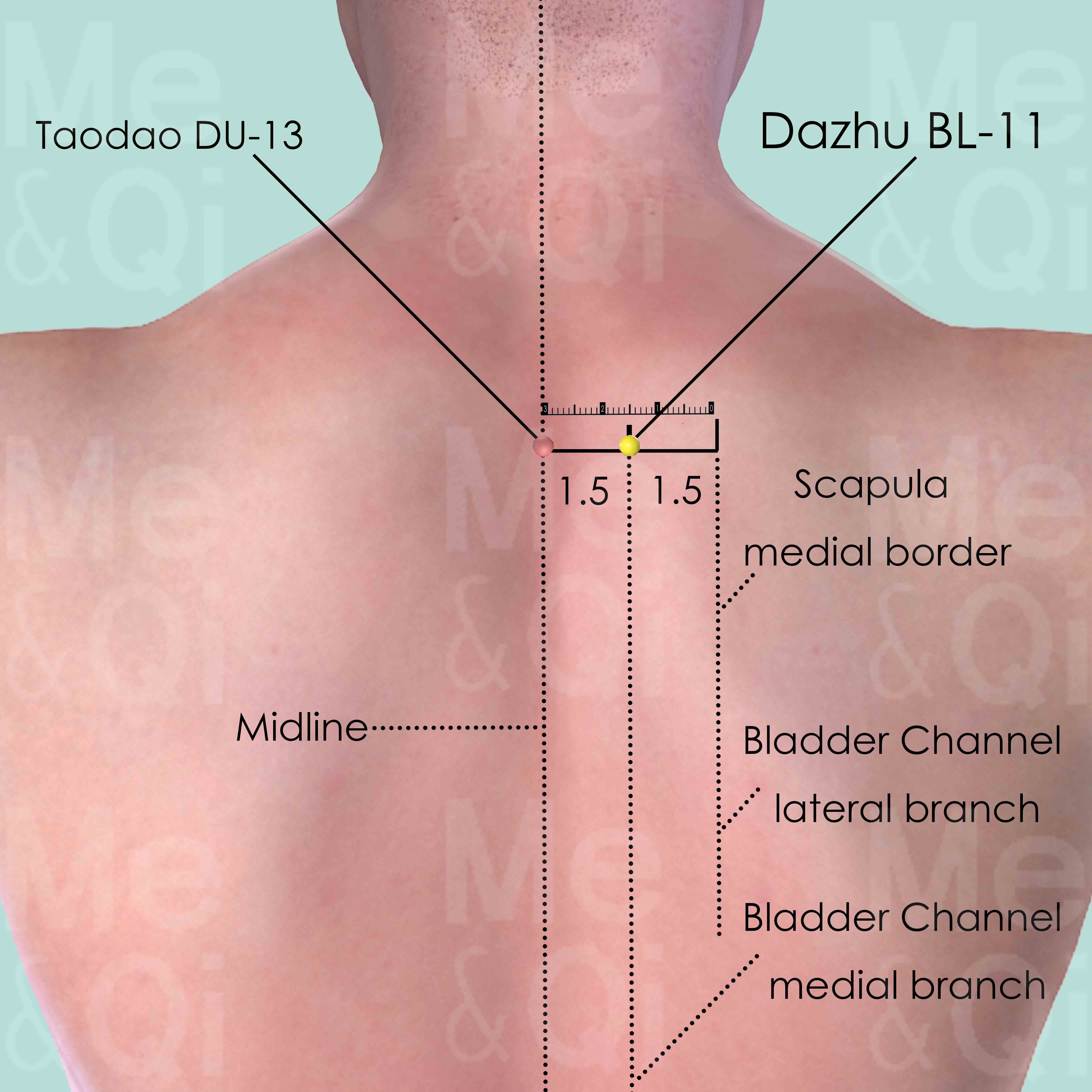
Dazhu BL-11
On the level of the lower border of the spinous process of the 1st thoracic vertebra (T1), 1.5 cun (about 2 finger-breadths) lateral to the posterior midline.
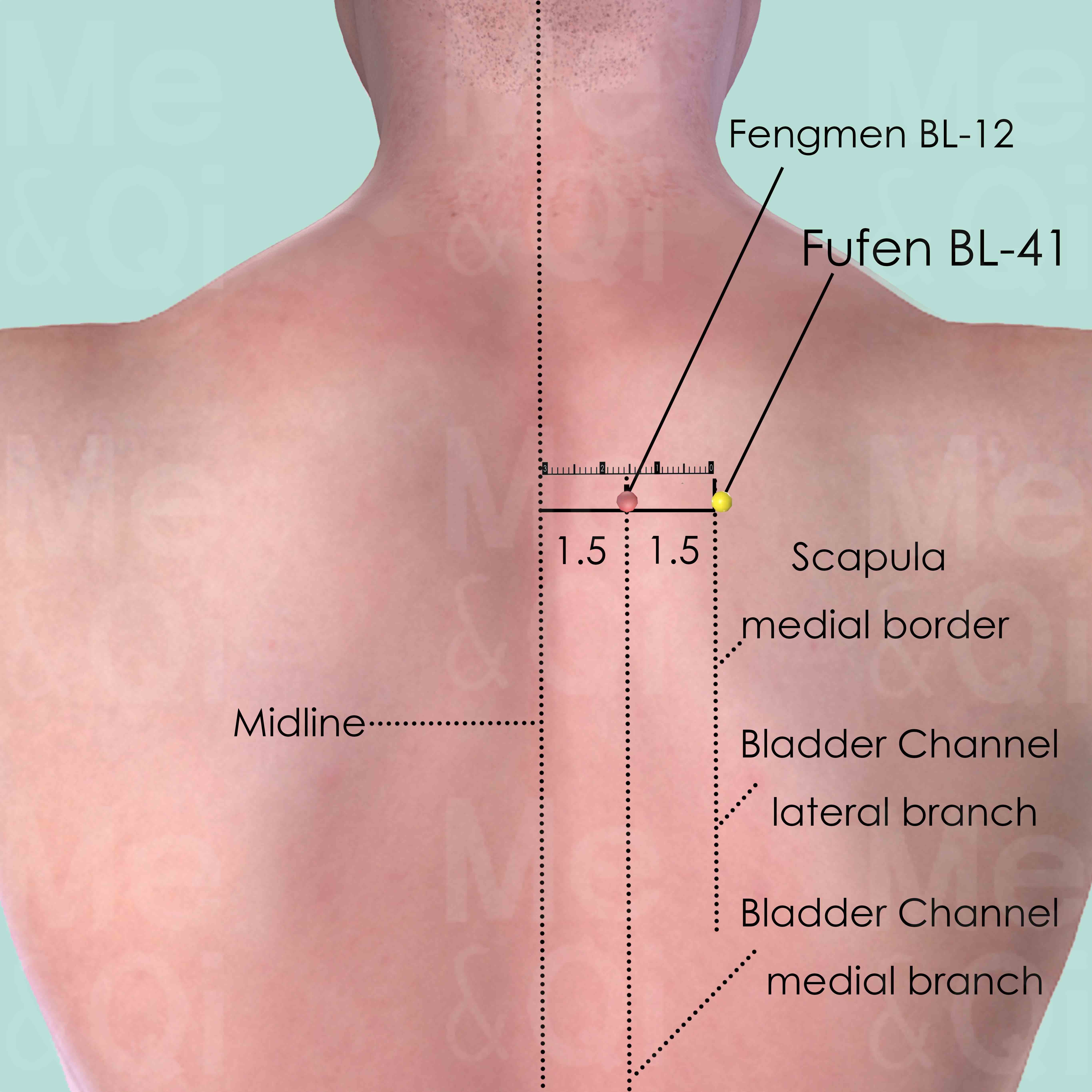
Fufen BL-41
3 cun (about 4 finger-breadths) lateral to the lower border of the spinous process of the 2nd thoracic vertebra (T2).
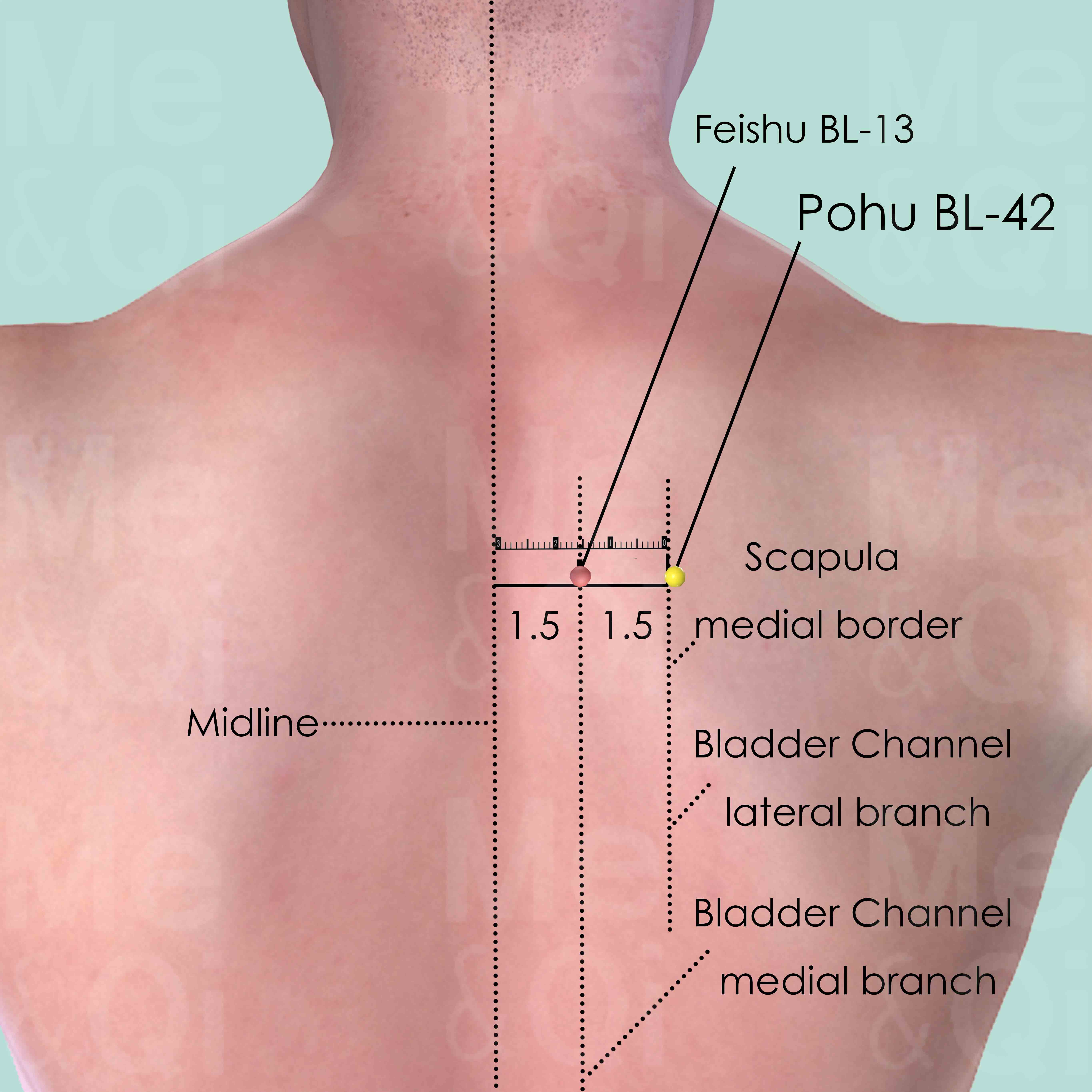
Pohu BL-42
3 cun (about 4 finger-breadths) lateral to the lower border of the spinous process of the 3rd thoracic vertebra (T3).
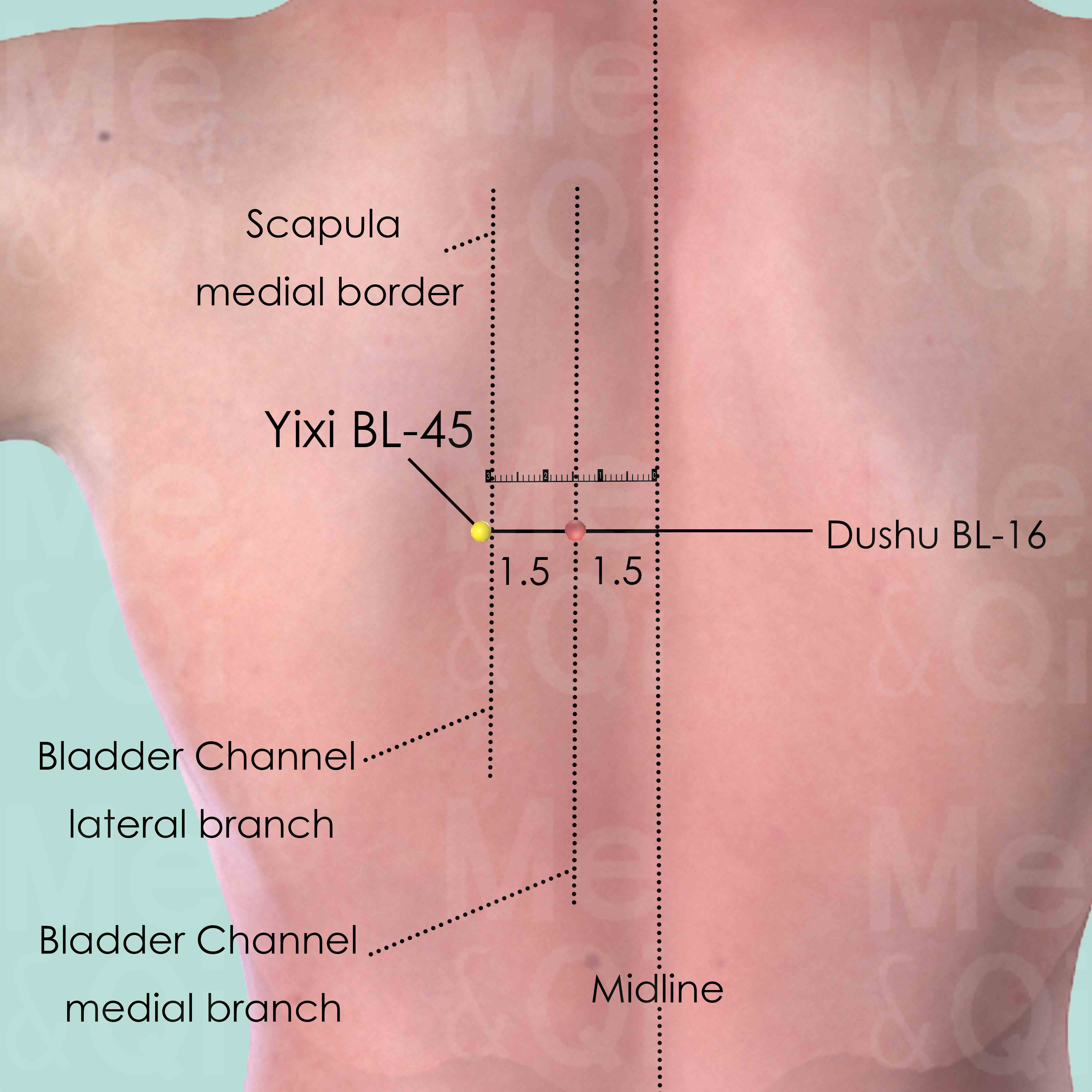
Yixi BL-45
3 cun (about 4 finger-breadths) lateral to the lower border of the spinous process of the 6th thoracic vertebra (T6).
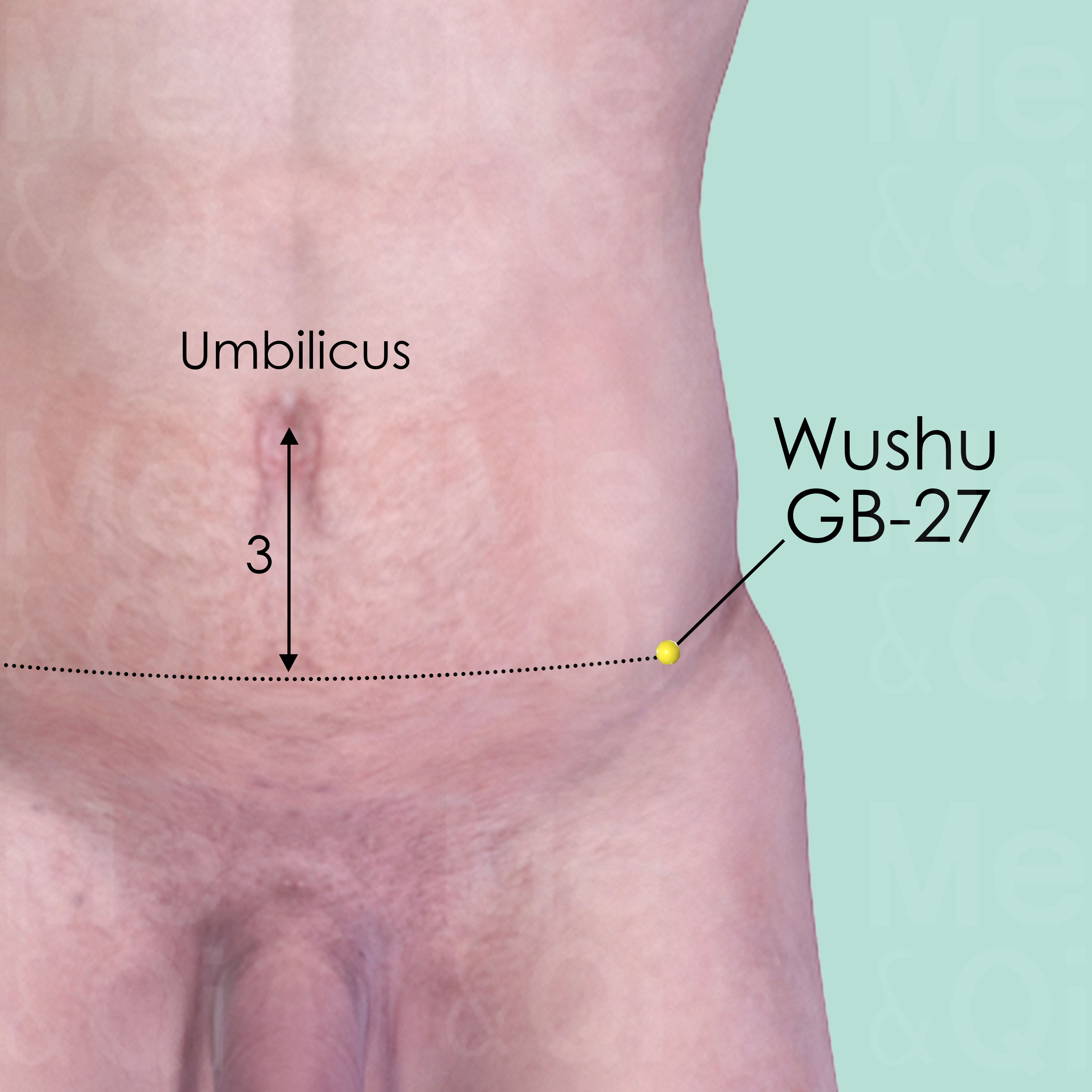
Wushu GB-27
In the lateral side of the abdomen, in the front of the anterior superior iliac spine (ASIS), 3 cun below the level of the umbilicus.
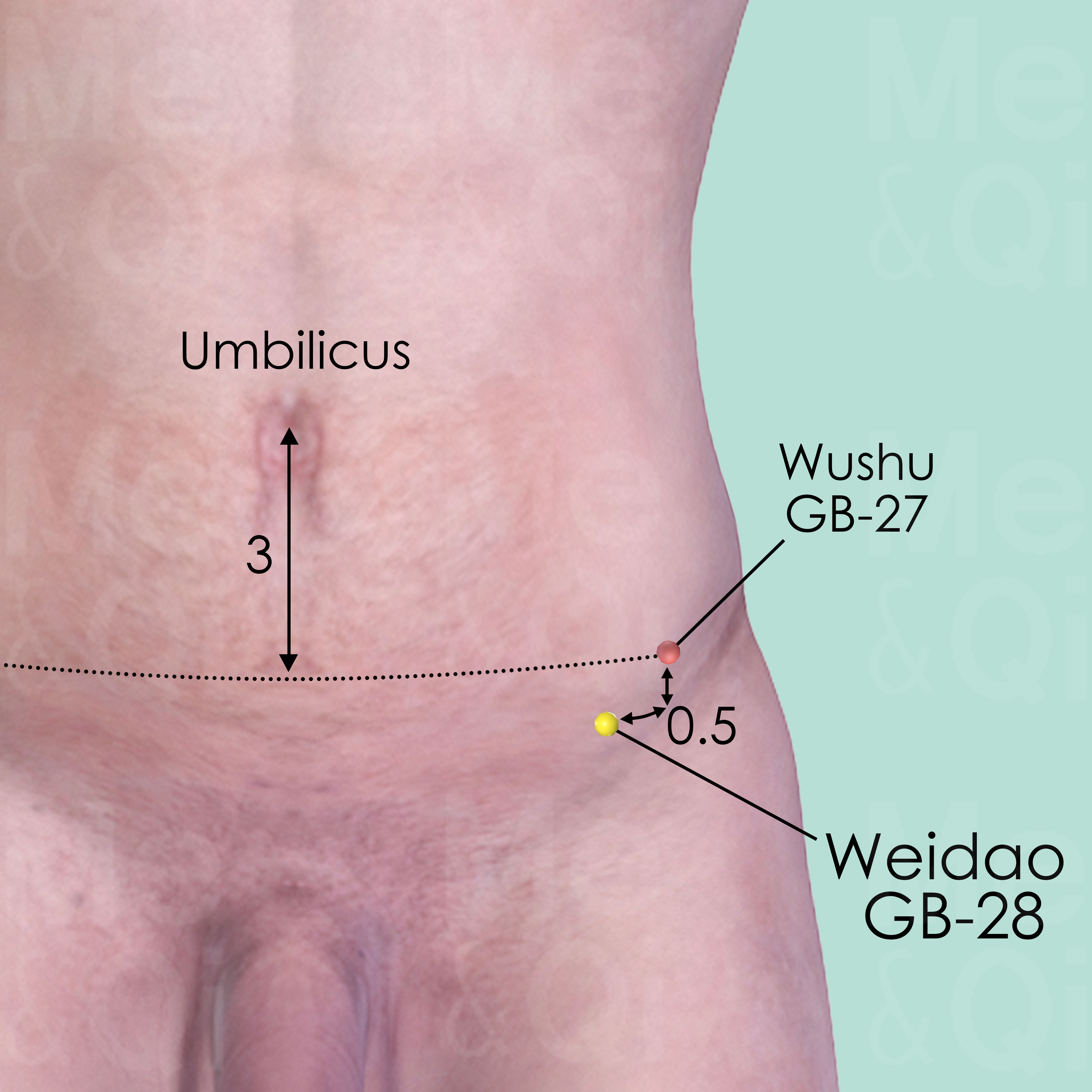
Weidao GB-28
Anterior and Inferior to the anterior superior iliac spine (ASIS), 0.5 cun anterior and inferior to Wushu GB-27.
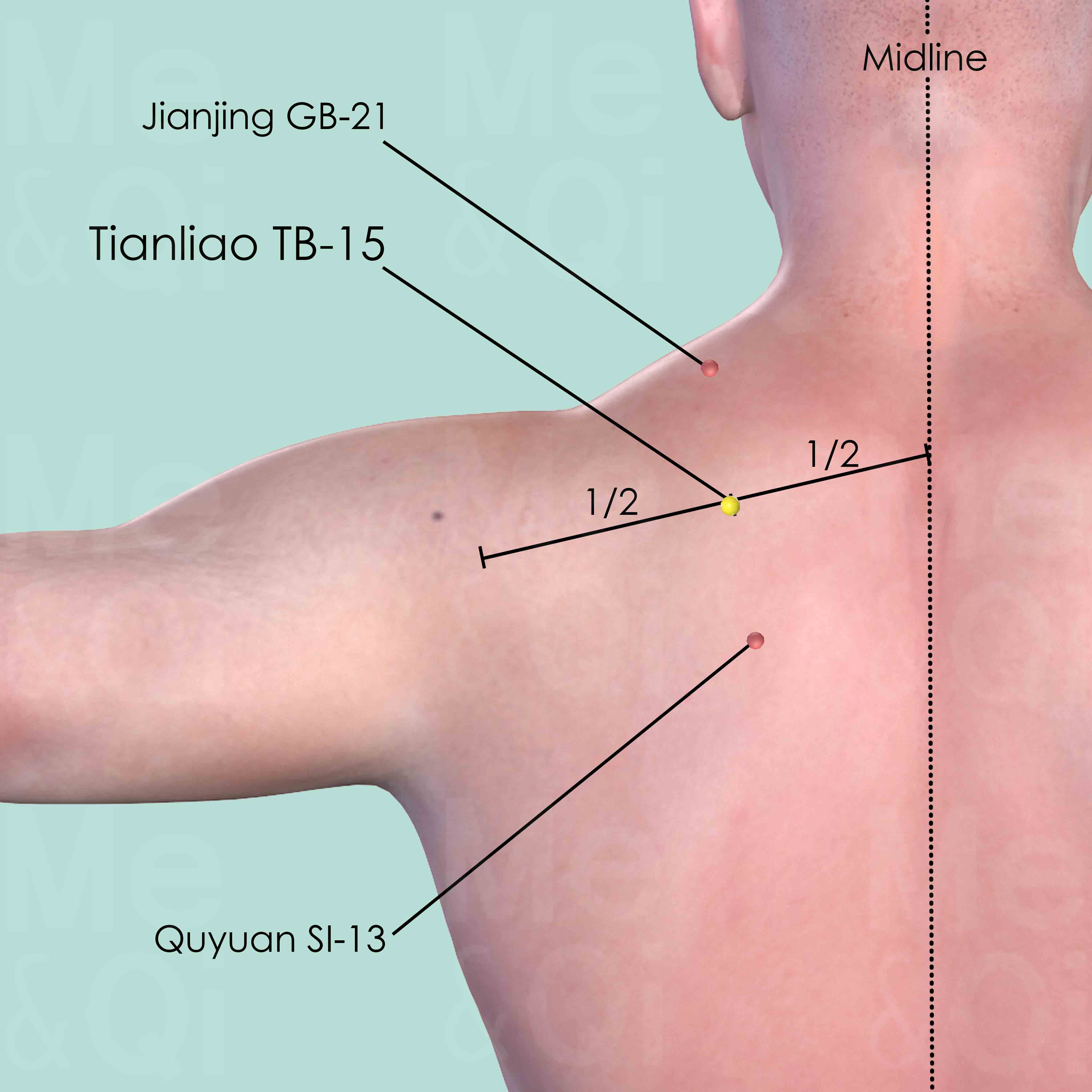
Tianliao TB-15
Midway between Jianjing GB-21 and Quyuan SI-13, on top of the superior angle of the scapula.
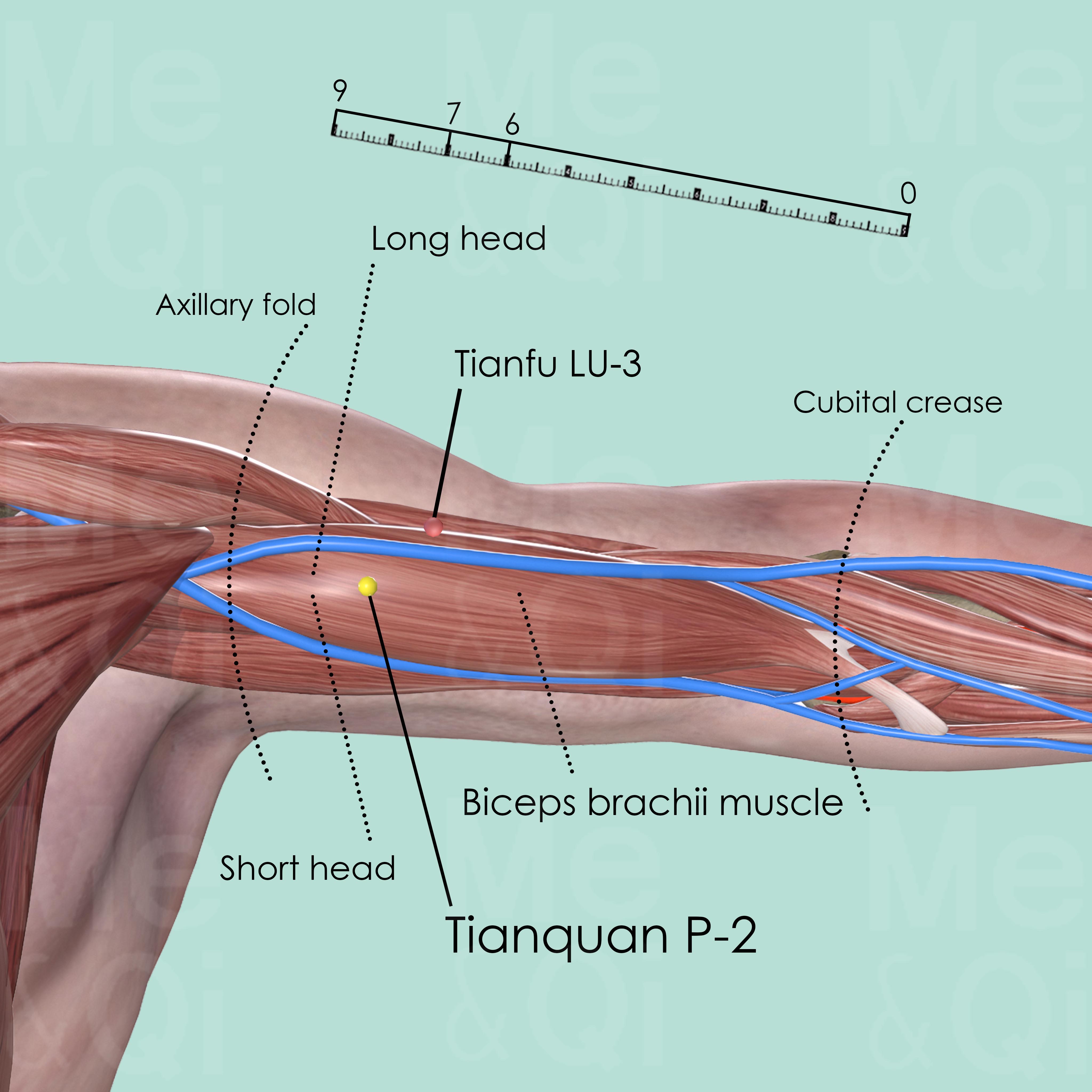
Tianquan P-2
2 cun below the end of the anterior axillary fold, between the two heads of biceps brachii muscle.

